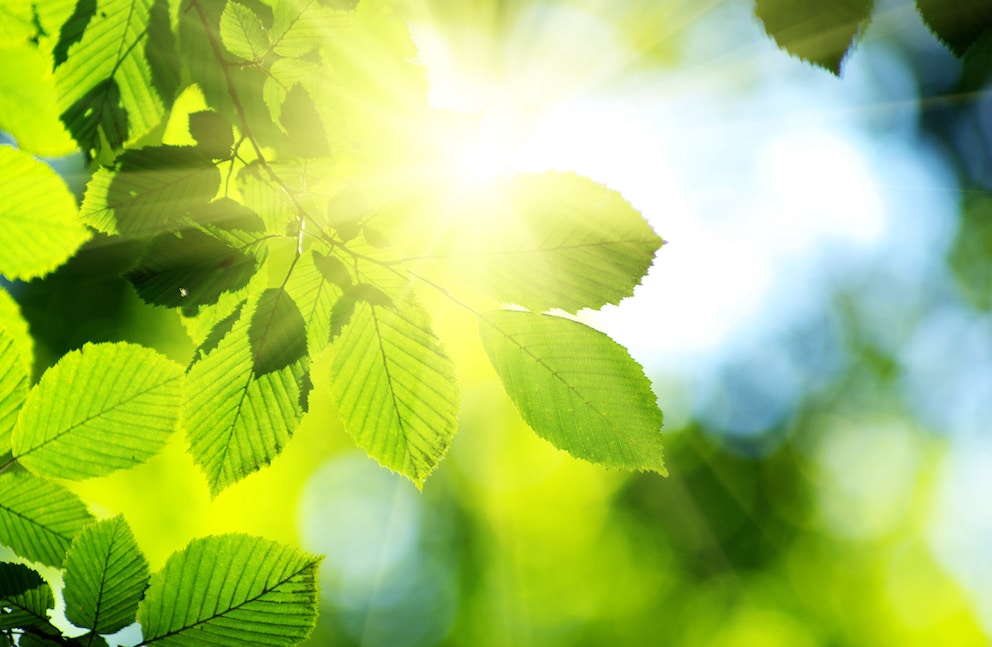July 9, 2024 at 2:36 PM |
Reading time: 3 minutes
In many areas, nature already provides the perfect solution that can be adapted and used in research. Scientists at the University of Würzburg have created a solar cell based on a plant model.
In addition to water and nutrients, plants also need sunlight to grow and carry out photosynthesis. They are very efficient: they can absorb and use sunlight with a relatively small leaf mass. Scientists have been trying for some time to adapt this effect and use it in photovoltaic technology. A team of researchers at the University of Würzburg has now developed a “plant solar cell”. The advantage: On the one hand, solar cells can be thinner, and on the other hand, they can also absorb sunlight more efficiently.
This is how a “plant solar cell” works.
In order to convert sunlight into electricity or another form of energy, you first need the most logical light-harvesting system, he says. Julius Maximilian University of Würzburg (JMO). The goal is to absorb as much light as possible in order to use it in the second step. The collection system should ideally be “panchromatic,” meaning that it covers the entire light spectrum if possible. This is where plants come in.
The so-called “light-harvesting antennae” of plants are able to capture a particularly broad spectrum of light during photosynthesis. However, these systems are extremely complex and require a variety of different pigments to transmit and focus the absorbed light. The advantage: With a layer thickness of only 100 nanometers (1 millimeter is 1,000,000 nanometers), organic pigments require much less surface area than silicon semiconductors.
“Our system has a band structure similar to that of inorganic semiconductors,” says Frank Worthner, a professor of chemistry at JMU. His team from the Institute of Organic Chemistry/Center for Nanosystems Chemistry developed and tested the light-harvesting system at JMU. The result: “This means that, similar to natural light-harvesting systems, it can absorb a lot of light energy in a relatively thin layer.”
Also interesting: Researchers are using the heat of hot peppers to make solar cells more efficient.
Four-dye system
The new light-harvesting antenna developed by the Würzburg researchers essentially consists of four different dyes stacked closely together. The molecules are arranged in such a way that they can transfer energy very quickly and efficiently.
The scientists call the new light-collecting system “URPB.” The acronym stands for the different pigment components that the antenna can pick up: U for ultraviolet, R for red, P for ultraviolet, and B for blue.
More about this topic

Capsaicin as a substance of the future
Researchers use hot pepper heat to make solar cells more efficient

Novel material
Researchers develop colored solar modules for facades and roofs

Thanks to the process of photosynthesis
“Bioenergy Plants” – Researchers Generate Electricity From Plants
Thus, the efficiency has been proven.
To prove that the “plant solar cell” works so efficiently, the scientists measured what is called the “fluorescence quantum yield.” This involves examining how much energy the system emits as light. This allows the researchers to determine how much light energy has already been absorbed. The result: 38 percent of the radiated light energy was converted into fluorescence — an impressive value. The combination and arrangement of the dye molecules plays an important role.

Nature as a model for science
“It’s always amazing what people learn from nature. Of course, a lot of research is still needed in this area, but based on current research, it may be possible to make silicon semiconductors lighter and thinner. This could also accommodate photovoltaic systems on a rooftop or balcony.

“Total coffee aficionado. Travel buff. Music ninja. Bacon nerd. Beeraholic.”









More Stories
Exploding Fireball: Find the meteorite fragments
Neuralink's competitor lets blind people see again with an implant
A huge meteorite has hit Earth – four times the size of Mount Everest